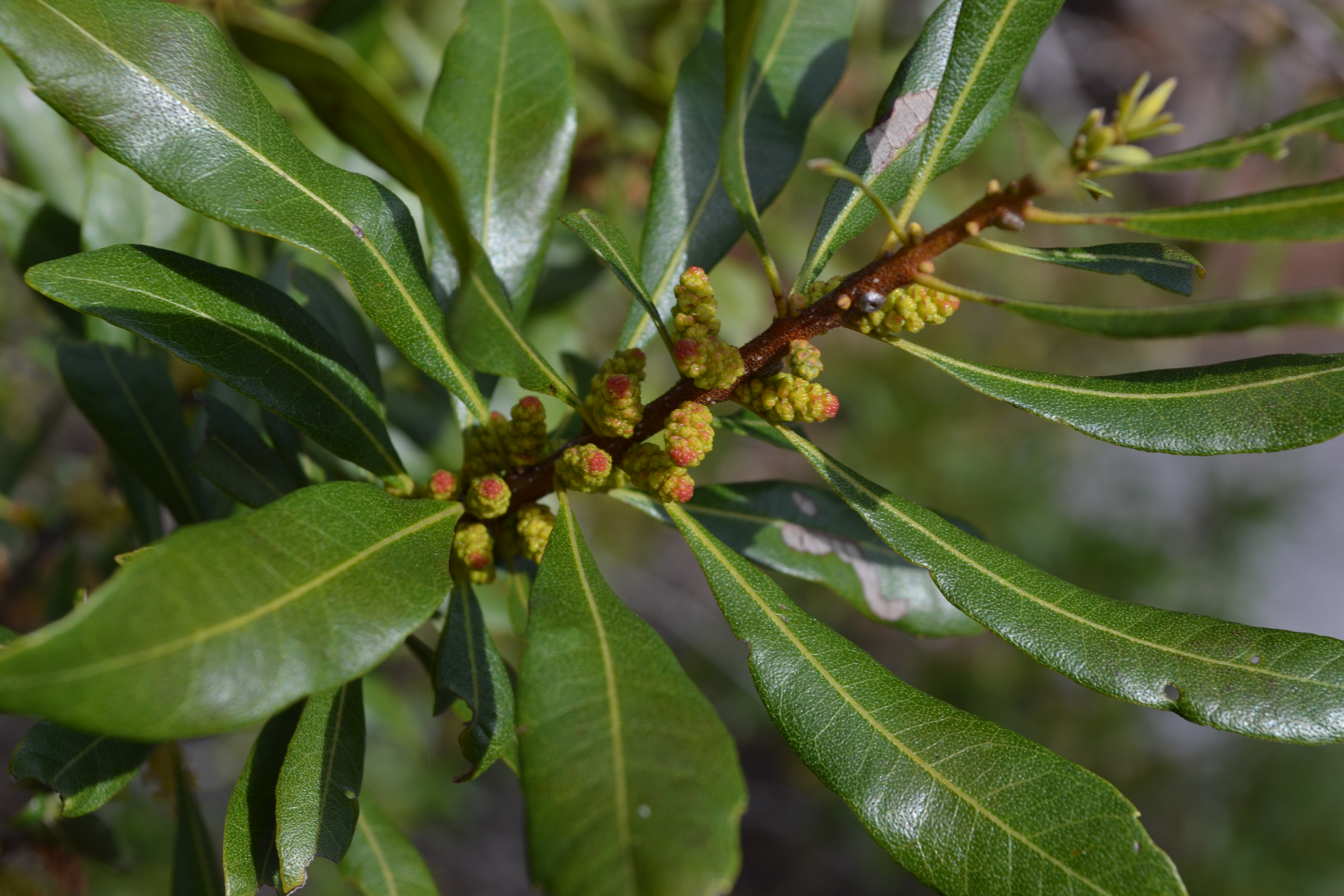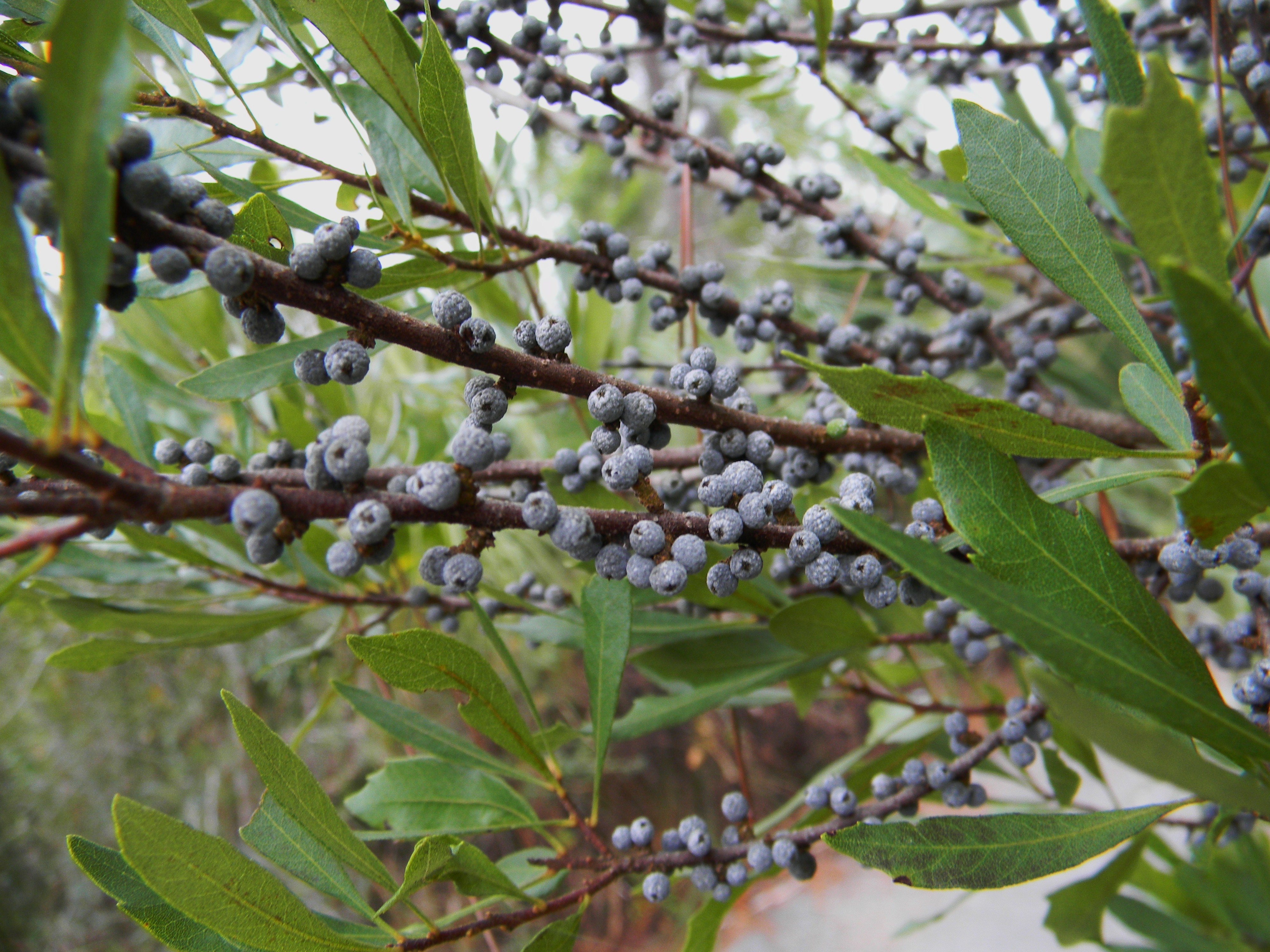Southern Bayberry
(Wax Myrtle)
Myrica cerifera
Plant Family: Myricaceae
Leaves: Alternate, simple, narrowly elliptic, to 15 cm, often toothed (sometimes not) toward the apex, aromatic; tiny yellow resinous dots are seen on both the upper and lower surfaces.
Bark: Light gray or brown, smooth.
Flowers: Dioecious, greenish yellow, in short catkins in the leaf axils from spring into summer.
Fruits: Rounded, with a blue-gray coating, to 1 cm in diameter, held along the branches of female plants from fall into winter.
Habitat: Probably most common in hammock and swamp edges with full sun, but may also grow in drier habitats such as pinelands; it tends to form thickets.
Growth Form: Shrub to small tree.
Key Features: The narrow, toothed leaves combined with the small blue-gray fruits will identify Southern Bayberry.
Comments: Southern Bayberry is found throughout Florida, including the Keys; the fruits yield wax to make scented candles and are relished by many birds for their high fat content. Although not a legume, the roots fix atmospheric nitrogen in the soil.


